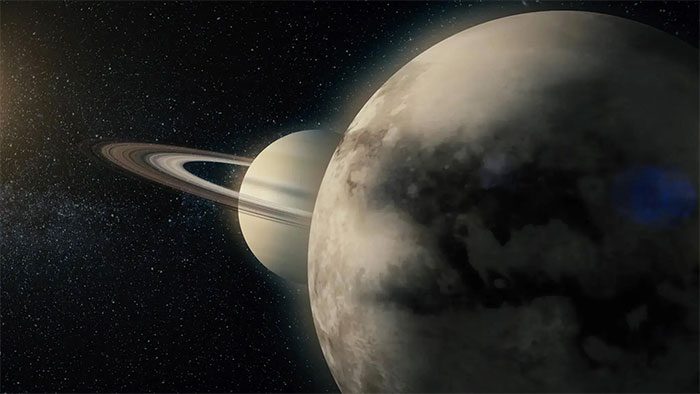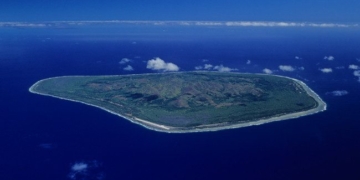Analysis of the “Legacy” of the Cassini spacecraft Reinforces Belief in the Existence of an Ocean with Life on Titan.
Numerical simulations of the deformation of Titan have clearly demonstrated the existence of an ancient ocean beneath its surface, containing a significant amount of water, a little ammonia, and possibly even life that has undergone various stages of evolution.
Titan, Saturn’s largest moon, has been depicted in images from NASA’s Cassini spacecraft, showcasing a landscape strikingly similar to Earth, with lakes, rivers, and mountains intricately layered beneath a thick atmosphere.
For a long time, NASA has referred to Titan as a “second Earth” due to its landscape and certain clues suggesting the potential for life.

Titan, the moon of life with Saturn in the background – (Photo: Media Whale Stock / Adobe).
A new study led by Dr. Sander Goossens from NASA’s Goddard Space Flight Center has further reinforced this belief.
The team analyzed data left by Cassini before it “self-destructed” in Saturn’s atmosphere in 2017, a dive that NASA navigated to prevent debris from the spacecraft from contaminating the “ocean worlds” of Titan and Enceladus.
Using precise radar measurements, scientists calculated the velocity variations of Cassini as it flew past Titan, followed by the gravitational changes and deformation of Titan over time.
They carefully examined the tidal effects on Titan at various points along the spacecraft’s orbit and concluded that the deformation was less than previously estimated.
Numerical simulations comparing this deformation with different internal structures suggest that the very likely scenario is that an ocean exists within the moon, composed of water and a small percentage of ammonia, according to the research summary on Sci-News.
This underground ocean could facilitate the transport of organic material from the moon’s rocky core to its surface. It was previously thought that the thick ice layer between the ocean and the core posed challenges to this process.
However, the new analysis by Dr. Goossens and colleagues reveals that the ice layer may be thinner than previously thought, making the exchange of material between rock and ocean more plausible.
“The organic molecules that this process could produce are considered crucial components for the emergence of life,” Dr. Goossens stated.
The results, recently published in the journal Nature Astronomy, bring additional hope for the missions to explore Titan that NASA is diligently planning.


















































